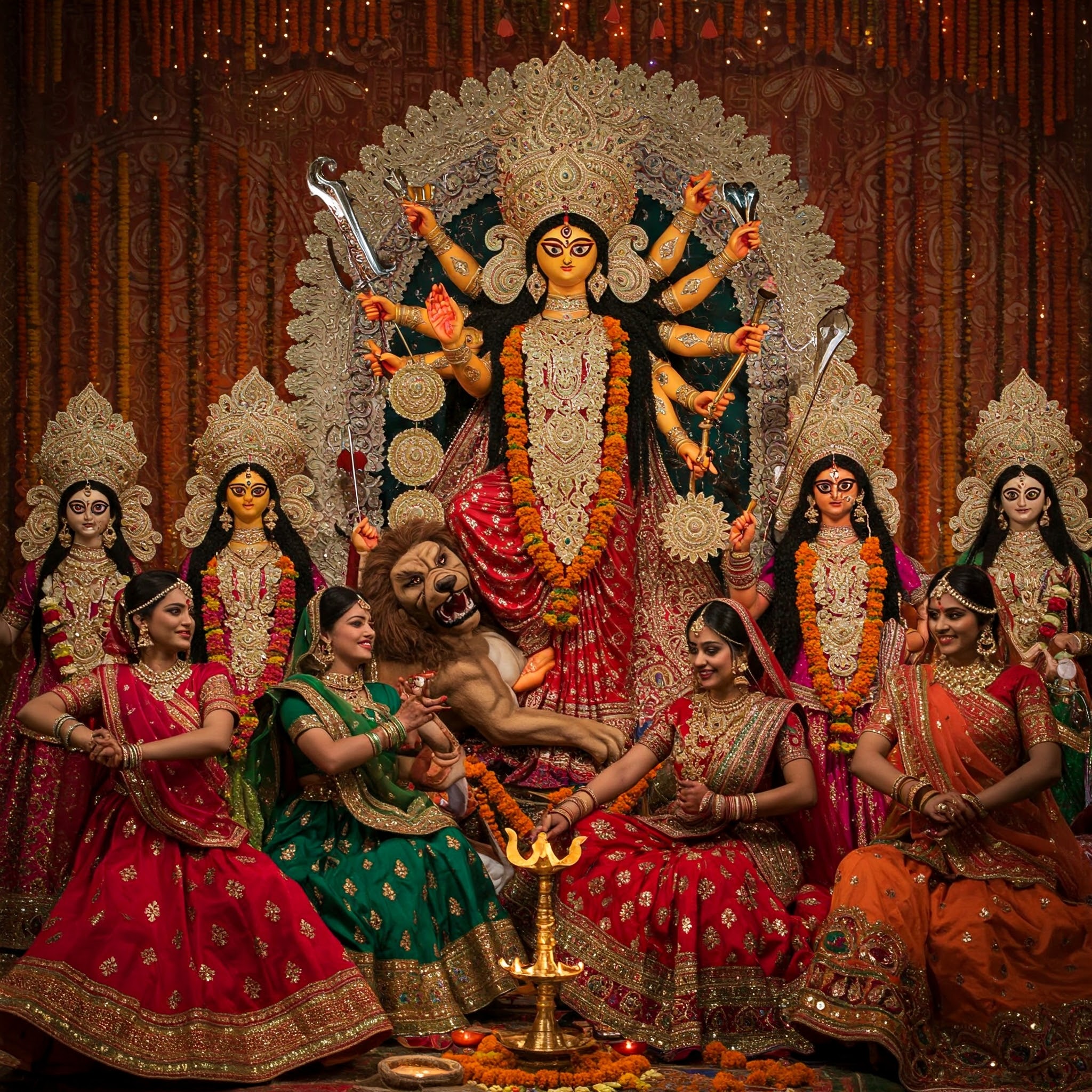Navratri, a nine-day Hindu festival, is a vibrant celebration of the divine feminine power that permeates the universe. Observed twice a year, Navratri honors the nine forms of the goddess Durga, each representing a unique aspect of feminine energy.
The Significance of Navratri
Navratri is a celebration of the triumph of good over evil, as embodied by the goddess Durga’s victory over the buffalo-demon Mahishasura. The festival is also a tribute to the feminine principles of creativity, nourishment, and transformation.
The Nine Forms of Durga
Each day of Navratri is dedicated to one of the nine forms of Durga, known as the Navadurgas. These forms are:
- Shailaputri: The first form of Durga, representing the embodiment of the goddess in the mountains.
- Brahmacharini: The second form, symbolizing the goddess’s ascetic and spiritual pursuits.
- Chandraghanta: The third form, representing the goddess’s embodiment of beauty and serenity.
- Kushmanda: The fourth form, symbolizing the goddess’s creative and nourishing powers.
- Skandamata: The fifth form, representing the goddess’s role as a mother and protector.
- Katyayani: The sixth form, symbolizing the goddess’s embodiment of courage and strength.
- Kalaratri: The seventh form, representing the goddess’s dark and fierce aspect.
- Mahakali: The eighth form, symbolizing the goddess’s ultimate power and destruction of evil.
- Mahanavami: The ninth and final form, representing the goddess’s embodiment of wisdom and spiritual growth.
Celebrations and Traditions
Navratri celebrations vary across different regions in India, but some common traditions include:
– Garba and Dandiya Raas: Traditional folk dances performed during Navratri, characterized by intricate footwork and colorful costumes.
– Durga Puja: The worship of Durga idols, often accompanied by rituals and offerings.
– Navratri Fasting: Many devotees observe a nine-day fast during Navratri, abstaining from certain foods and activities.
– Navratri Music and Dance: Traditional music and dance performances, often featuring devotional songs and classical dances.
Conclusion
Navratri is a joyous celebration of the divine feminine power that permeates the universe. As we honor the nine forms of Durga, we are reminded of the importance of feminine energy in our lives. Let us celebrate Navratri with devotion, joy, and a deep appreciation for the goddess’s transformative power.


